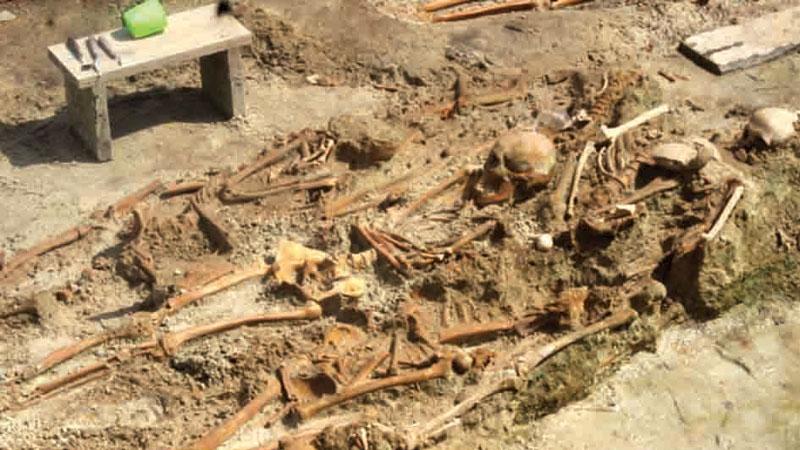
Forensic experts have spent the past two weeks screening and tracing skeletons and cleaning the excavation site of a mass gravesite in the Mannar town, while hundreds of families of the missing persons await the results of the first carbon dating tests on bone samples from the area to be made public.
The full report of the radio carbon dating is ready online and the hard copy is expected to arrive in the country in a week, the Chief Investigator of the Mannar mass gravesite at the Lanka Sathosa premises and Consultant Judicial Medical Officer (JMO) Mannar, Dr. Saminda Rajapaksha, told the Sunday Observer yesterday. The payment of the courier had been confirmed by Friday, he said.
Dr. Rajapaksha said that the excavation site was being treated as “a scene of crime investigation until proven otherwise.”
The site has been under 24-hour police surveillance, and access to the site has been restricted. The team discussed the possibilities with the Mannar Magistrate and was briefed on the legal provisions to demolish the buildings in the surrounding area with compensation to the owners, and to close the main A14, Medawatchiya-Talaimannar road temporarily if the need arises, Dr. Rajapaksha said.
The excavation at the Mannar mass gravesite continued for the 152nd day on Friday, he said. However, the number of skeletons identified and taken from the site stayed as of February 15, at 323 and 314. The past two weeks were spent screening and tracing the skeletons and cleaning the area, he said.
The decision on whether to continue the excavation and investigation at the site, would be a critical decision. It should not depend on political or personal agendas. Whatever the decision the team takes, it should deliver justice and not leave unanswered questions for the future or room for suspicion,” said Dr. Rajapaksha.
He reiterated the value of keeping to the standard procedure and conducting a scientific excavation, even if it is decided to be stopped as it is.
The gravesite at the Sathosa premises in Mannar was detected in March last year and the scientific excavation and investigation began on May 28, with the participation of a team of consultant JMOs, Forensic Archaeologists, Government Analyst’s Department officials and Police Scene of Crime Officers.
While the area was about 11 and 13 metres in width and length, the massgrave site at the undisturbed area was found about three metres north of the demolished Sathosa building and was marked by the lack of evidence of ritualistic burial. The disturbed area on the eastern side of the building contained many ritual burials.
The team earlier reported finding artefacts belonging to three different periods, dating back from the 5th or 6th Century, the Dutch era and the modern period, including beads, rings and polythene biscuit covers. However, early December, the investigators recovered some skeletons where the bones below the knees were bound by something which had corroded, prompting demonstrations by the families of the missing persons in the area.
The samples for radio-carbon analysis to be conducted at the Beta Analytic Laboratory in Florida, USA, were collected in the presence of the Mannar Magistrate, OMP representatives and representatives of the Organisations of the Families of Missing Persons on December 18. The samples were handed over to the Laboratory on January 25.
The families of the missing persons staged another protest in Mannar on Thursday.
